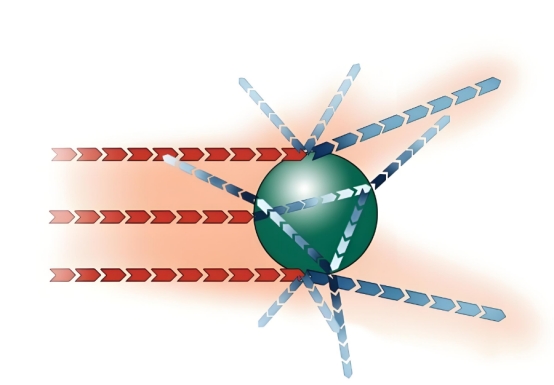- Call us!
- +86 531 8887 6213
- cathy@winner-psa.com
1. Refractive Index
The ratio of the speed of light in a vacuum to its speed in another material is called the refractive index. This determines whether light is diffracted, reflected, or refracted when it encounters a particle, and the relative intensities of these effects. This significantly influences the angular distribution and intensity of the scattered light.
2. Absorption Rate
Absorption rate is the ratio of the amount of thermal radiation energy absorbed by a particle to the total thermal radiation incident on the particle. For transparent or translucent particles, the absorption rate is very low (k ≈ 0), and light is primarily scattered. However, for colored or opaque particles (such as carbon black, metal powders, and certain pigments), the absorption rate is very high, and light is significantly absorbed.
In laser particle size analysis software, the refractive index is expressed as a complex number. Its real part represents the actual refractive index, and its imaginary part represents the absorption rate.
The complex refractive index is expressed as: m = n + ki
Real part (n): It is the normal refractive index, which determines the speed of light and its deflection.
Imaginary part (k): It is the absorption rate, which determines the degree of light absorption.
The refractive index and absorption rate of common samples can be found in modern laser particle size analyzer software and in powder manuals. For unique samples, the refractive index and absorption rate can be found in other data sources or measured. Furthermore, the optical refractive index of a known sample can be used to substitute for that of a sample with similar optical properties, such as using the refractive index of "iron" to substitute for the refractive index of a certain "alloy." The absorption rate of an unknown sample can be approximated by color estimation and comparison. For example, a black sample has an absorption rate of 1+, dark gray to light gray samples have an absorption rate between 1 and 0.1, and white to transparent samples have a refractive index between 0 and 0.01.

Copyright © Jinan Winner Particle Instrument Stock Co., Ltd. All Rights Reserved | Sitemap
Keywords:
Laser Particle Size Analyzer Spray Particle Size Analyzer Particle Image System Online Particle Size Analyzer Particle Size Analyzer particle size distribution particle size analyzer manufacturer Laser diffraction particle size analyzer particle size malvern particle size analyzer